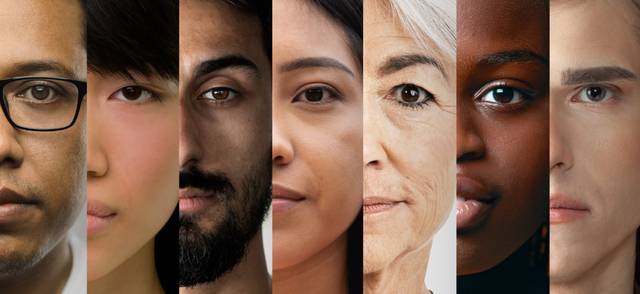What’s the big deal? Here’s why microaggressions matter
By Carolyn Ali
Everyday discrimination not only reinforces power structures it actually harms our health. Here’s what we can do to counter it
You may have experienced microaggressions but couldn’t exactly put your finger on them. It might have been a colleague’s dismissive comment at a meeting. A remark by a classmate that made you feel like you didn’t fit in. Or perhaps it was a salesperson who followed you around the store, watching you a little too intently.
Maybe you didn’t know how to respond in the moment. Then afterwards, you wondered: did this person mean well? Were they out of line? Or are you just being too sensitive?
This kind of ambiguity is common for people experiencing microaggressions, says Dr. Nancy Sin. “The interaction may be fleeting, but the impact is real,” she says. “As humans, we are such social beings, we are so attuned to the signs or signals that we don’t belong.”
“As humans, we are such social beings, we are so attuned to the signs or signals that we don’t belong.”
— Dr. Nancy Sin, associate professor of psychology, UBC
An associate professor of Psychology at UBC, Dr. Sin studies everyday discrimination. “There’s a growing body of research that shows microaggressions have many serious health effects, both mental and physical,” she says. And while we tend to minimize microaggressions, they actually add up to harm our health.
Individual microaggressions also cumulatively harm society, says Dr. Alifa Bandali, an assistant professor of teaching at UBC’s Institute for Gender, Race, Sexuality and Social Justice. She explains that whether microaggressions come from a place of ill intent or ignorance, they serve to reinforce power structures around the intersections of race, gender and different social identities.
The good news? The more we become aware of microaggressions – both experiencing them and committing them – the more we can do to counter them.
How microaggressions uphold systems of power
Dr. Bandali says that determining how to respond to a microaggression can be particularly difficult in situations where there are unequal power relationships, like in the workplace. “Often there is no language or conversation around it,” she says. Microaggressions often go unnoticed by others, including the perpetrator, and if the person impacted voices concerns, they may be dismissed. “That’s where mental health is really important, because a lot of this is silenced.”
“The best ways in which ideologies operate are through covert and invisible ways, so that we don’t pay attention to them.”
— Dr. Alifa Bandali, an assistant professor of teaching at UBC’s Institute for Gender, Race, Sexuality and Social Justice
While the person who commits the microaggression may or may not intend harm, Dr. Bandali says it’s important to remember that microaggressions “come from a place.” They reflect dominant belief systems and are often rooted in ideologies that perpetuate racism, sexism, classism, homophobia and transphobia, to name a few. Both conscious and unconscious bias plays out through seemingly neutral systems and structures like laws, policies and media, as well as on an interpersonal level, through microaggressions. “There is a connection between microaggressions and larger systems and structures,” she says.
Microaggressions very subtly reinforce systems of power around race, gender, age and other identities. For example, when a gendered phrase like “ladies and gentlemen or “boys and girls” is accepted as inclusive of everyone, it reinforces a division between masculine and feminine. “The best ways in which ideologies operate are through covert and invisible ways, so that we don’t pay attention to them or that we see them as fleeting,” says Dr. Bandali.
How we can counter microaggressions
Both Dr. Bandali and Dr. Sin emphasize that individuals on the receiving end of microaggressions shouldn’t be burdened with dealing with them on their own. “There’s a lot that we can do through our social structures and institutions, such as workplaces and schools, to cultivate inclusive environments where microaggressions would be less likely to occur,” says Dr. Sin.
Here are a few things institutions and individuals can do.
Learn to recognize microaggressions
Microaggressions often show up when people are trying to confirm their biases about others, says Dr. Bandali. For example, when she is asked “where are you from?” and she gives an answer that doesn’t relate to her race or ethnicity, it’s often followed by “where are you really from?”
With microaggressions, context is important. “Sometimes people genuinely want to build connections,” she says, which you can do once you get to know what a person’s intentions are. But trying to put a person in a box to confirm a surface-level judgement can be received as a microaggression.
Offer sensitivity training
Within institutions, continuing education helps to raise awareness and signal to people experiencing microaggressions that they are valued, says Dr. Sin. “These programs are also valuable for people from majority groups or who have a more privileged status,” she adds. “Many of them want to learn and want to be able to ask questions, and may not have an appropriate place to ask them.”
Create safe, supportive spaces
Stress research shows that individuals simply anticipating a stressful encounter increases blood pressure and stress hormones, according to Dr. Sin.
She encourages leaders to ask themselves, “How do we create spaces that are welcoming, where people feel comfortable and don’t come in feeling tense and anticipating microaggressions?” This might involve facilitating safe spaces for BIPOC staff in the workplace, where people can find support and validate each other’s experiences.
Counter microaggressions with positive “uplifts”
Dr. Sin’s research has found that when a positive event occurs on the same day as a microaggression, it helps to reduce the impact of negative emotions. “We think people might be seeking out positive experiences as a way of coping with the microaggression,” she explains.
Most of these positive experiences involve other people, such as going for a walk with a friend or talking to a loved one. That’s why providing supportive spaces where people can empathise matters. Other small solitary uplifts, such as spending time in nature, gardening or meditation, have also been shown to counter negative emotions.
Be willing to learn from mistakes
Dr. Bandali points out that we all come from different backgrounds and life experiences: “We don’t know everything about everything, and we are all complex.” The key is not to remain ignorant about what you don’t know. “That’s where education is really important.”
If you’re called out for a microaggression, apologize and genuinely seek to understand it. “There’s no way to immediately eradicate all forms of microaggressions – they will happen,” says Dr. Bandali. “But how they happen and the kinds of conversations around them doesn’t need to be the same.”
Learn about examples of microaggressions
Carolyn Ali is a writer for UBC Brand and Marketing. This article was published on September 28, 2022. Feel free to republish the text of this article, but please follow our guidelines for attribution and seek any necessary permissions before doing so. Please note that images are not included in this blanket licence.





